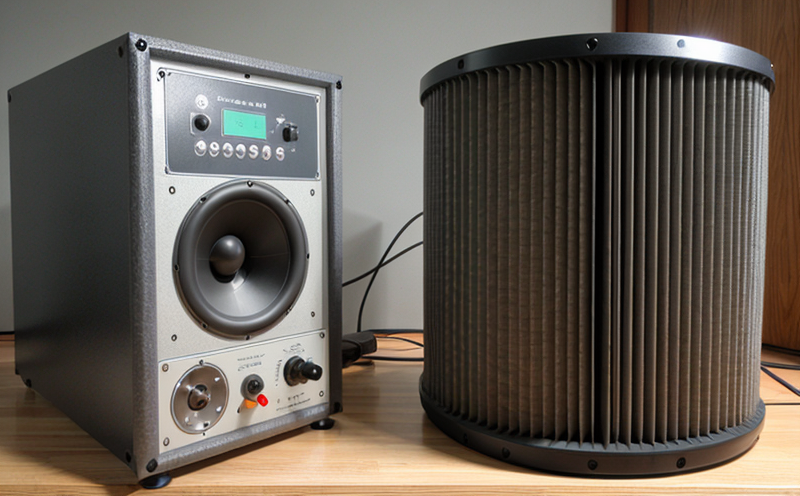IMO Resolution A.468(XII) Noise Levels on Board Ships Testing
The International Maritime Organization (IMO) Resolution A.468(XII), commonly known as the "Noise Regulations," sets forth stringent requirements for reducing noise levels onboard ships to ensure a healthier and more comfortable environment for crew members, passengers, and visitors alike. This regulation is crucial in maintaining compliance with international maritime standards while enhancing operational safety and comfort.
Compliance with IMO Resolution A.468(XII) requires comprehensive testing of various shipboard equipment that can contribute to noise pollution. The testing process involves measuring sound levels at designated locations, such as engine rooms, crew quarters, and public areas, using specialized acoustic instruments. These measurements are compared against specified limits outlined in the resolution.
The primary goal of this regulation is to minimize exposure to excessive noise levels, which can lead to hearing loss and other health issues among personnel working on ships. By adhering to these standards, ship operators not only meet regulatory requirements but also improve crew well-being and safety. The testing procedure typically includes multiple steps: initial assessment, equipment calibration, data collection, analysis, and reporting.
Initial assessments involve identifying potential sources of noise aboard the vessel. This step is critical as it helps pinpoint areas where improvements are necessary. Calibration ensures that all measuring devices used during the test are accurate and consistent with international standards like ISO 19626:2017. Data collection follows, involving continuous monitoring at predefined intervals to capture a comprehensive dataset.
Analysis involves interpreting collected data against established thresholds defined by Resolution A.468(XII). Reporting is then prepared detailing findings, including any non-compliance issues identified during the assessment. Compliance with this regulation can significantly enhance the overall quality of life for those working on ships, leading to improved productivity and reduced absenteeism.
Failure to comply with IMO Resolution A.468(XII) could result in penalties from regulatory bodies responsible for enforcing maritime laws. Therefore, thorough testing is essential not only for avoiding fines but also for fostering a safer, more comfortable environment onboard ships.
Why It Matters
The importance of adhering to IMO Resolution A.468(XII) cannot be overstated given its direct impact on crew health and safety. Continuous noise exposure can lead to various medical conditions, including hearing loss, stress-related illnesses, sleep disturbances, and reduced cognitive function. By implementing effective noise control measures, ship operators contribute positively towards maintaining a healthy workforce.
Moreover, compliance with this regulation demonstrates commitment to sustainability principles by reducing energy consumption through better insulation materials that help insulate against sound transmission effectively. This approach also supports long-term cost savings as it minimizes the need for costly repairs due to equipment failure caused by excessive noise levels.
- Avoiding potential fines imposed by maritime authorities
- Enhancing crew satisfaction and morale
- Promoting safer working environments
- Supporting sustainable practices within the industry
In summary, IMO Resolution A.468(XII) Noise Levels on Board Ships Testing is essential for ensuring a healthy work environment while adhering to international maritime standards.
Eurolab stands out as one of the leading laboratories in providing comprehensive services related to IMO Resolution A.468(XII) Noise Levels on Board Ships Testing due to our extensive experience, advanced facilities, and commitment to excellence.
- Experienced Professionals: Our team comprises highly skilled engineers specializing in acoustics who possess deep knowledge of international standards like ISO 19626:2017.
- State-of-the-Art Facilities: Equipped with cutting-edge acoustic measurement equipment, ensuring precise and reliable results.
- Prompt Reporting: Timely delivery of detailed reports outlining findings and recommendations for improvement.
- Comprehensive Support: Offering guidance throughout the entire testing process from initial consultation to final report generation.
We pride ourselves on delivering accurate, reliable results that help our clients meet regulatory requirements confidently while enhancing operational efficiency.
Use Cases and Application Examples
| Scenario | Description |
|---|---|
| New Ship Construction | Testing conducted during the design phase to ensure compliance with IMO Resolution A.468(XII) before final assembly. |
| Regular Maintenance | Ongoing monitoring of noise levels at various intervals throughout a vessel's lifespan to maintain optimal conditions and identify any emerging issues early. |
| In-Service Compliance Checks | Periodic verification of compliance with IMO Resolution A.468(XII) after modifications or upgrades have been made to the shipboard equipment. |
| Purchase Evaluation | Evaluation of new ships before purchase to ensure they meet current noise regulations and standards. |
- Initial Assessment: Identifying potential sources of noise aboard the vessel.
- Data Collection: Continuous monitoring at predefined intervals to capture a comprehensive dataset.
These scenarios demonstrate how Eurolab's expertise in IMO Resolution A.468(XII) Noise Levels on Board Ships Testing plays an integral role across different phases of ship lifecycle management.





